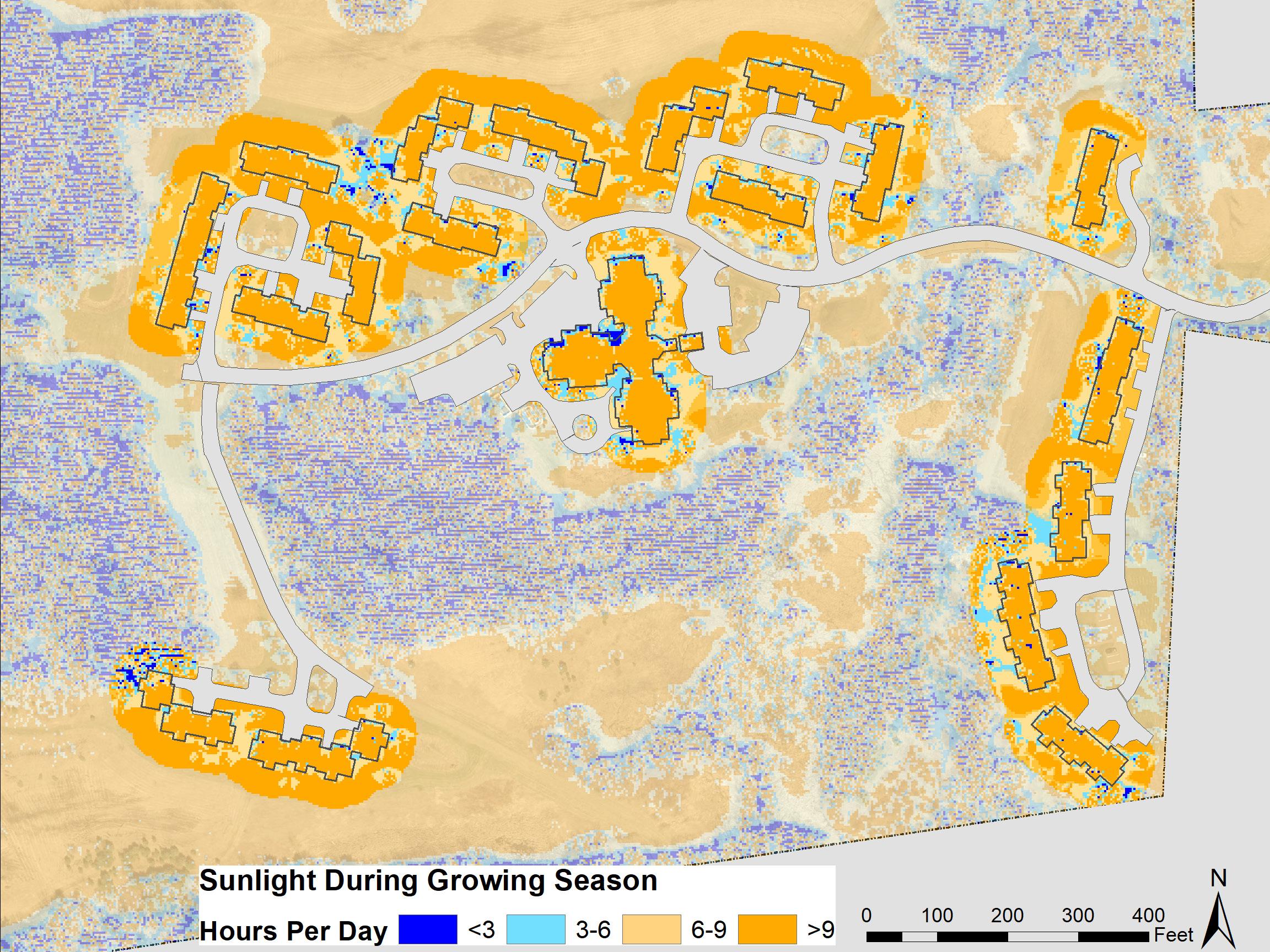Residents using walkers or wheelchairs could find it difficult to move through leaf litter. The creation of stone dust paths would allow all residents to enjoy the shade and scenery of the mini forest. Leaves would have to be removed from these paths occasionally to maintain accessibility.
Precedents
Above: A canopy planting plan; new trees are shown with a plus symbol, while light green signifies existing stands of trees. A path network allows access into the middle of the mini forest. Undestory and ground cover species are planted beneath the canopy.
Plastic mesh to protect from deer
A forest garden with a canopy and ground cover layer would allow more visibility and require fewer plants than a multi-tiered forest.
A multi-tiered forest with understory shrubs would mimic a typical New England forest and provide excellent habitat value.
Left: Planting smaller saplings of one to three feet tall reduces transplant stress and thus increases the rate of success. When possible, it is best to use bare root saplings. Dig a planting hole to the depth of the root ball and two to thee times as wide; water thoroughly. Before 2-3” of planting, ensure that no roots are woodchip crossing. Dip the roots in a high mulch, avoid quality mycorrhizal innoculant and root crown Dig hole then bury with native soil dug from 2-3x as wide as the the site. Ensure that the root crown root ball is just above the soil line. Water the area again. Apply roughly 1/4” of high quality compost and mulch with 2-3” of wood chips, ensuring not to bury the root crown. Use deer protection such as plastic mesh fencing while the tree is small.
Spring 2020
Mowing can be reduced or eliminated as grass is suppressed by a lack of sunlight and a layer of leaf litter. The ground layer can be planted with ferns, or forest understory shrubs could be added to create a multi-tiered woodland garden. The addition of signs explaining the benefits of leaf litter to the forest ecosystem may help residents who expect leaves to be removed to understand this practice.
Lathrop Retirement Community Landscape Master Plan
DESIGN DIRECTION
This area should be managed as a forest or woodland garden. Trees are planted close enough to create a closed canopy suppressing grass beneath it. Once the trees are uniformly over 15 feet tall, fallen leaves and small twigs should be allowed to remain in place; which will create forest-like soil conditions. The leaf litter layer reduces evaporation from the soil, helping plants survive droughts which may occur more frequently with climate change. The leaf litter layer is also a crucial source of carbon for soil micro-organisms, which, in turn, release nutrients into the soil that plants then use. Numerous animal and insect species rely on leaf litter for food or overwintering habitat, and these organisms will provide food to birds and other animals.
Eli Bloch and Allison Mason
This design adds 19 native trees to existing stands of mature trees to create a forest-like environment. Trees are planted 20 to 35 feet apart to keep the ground layer open and easy to navigate. There will be room to add chairs, benches or forest understory plants if that is desired in the future.
Mini Forest
This design connects existing stands of mature trees to create a forest within the residential landscape
Northampton and Easthampton, Massachusetts
THE CONWAY SCHOOL
Design Direction: Mini Forest
23
Not for construction. Part of a student project and not based on a legal survey.
















